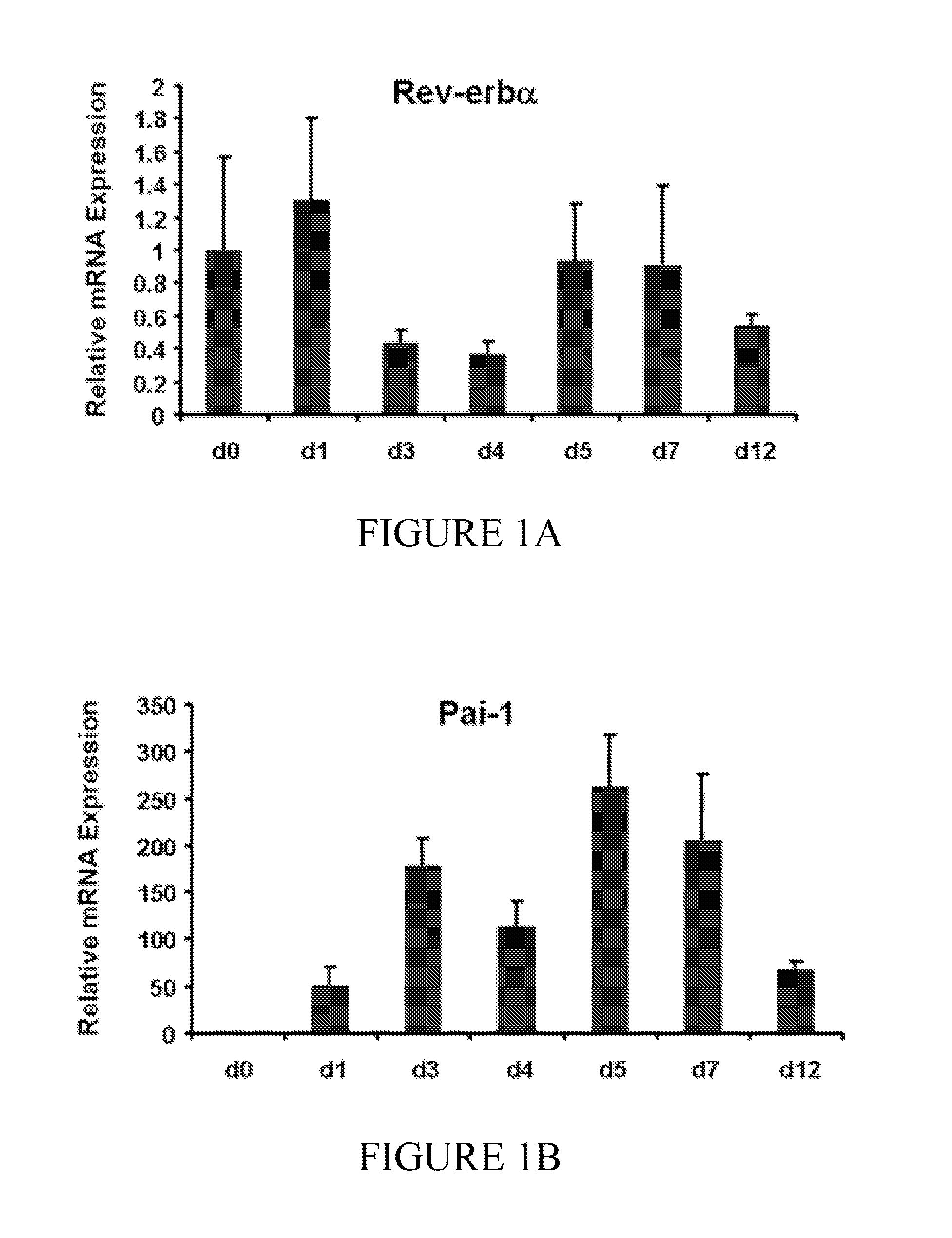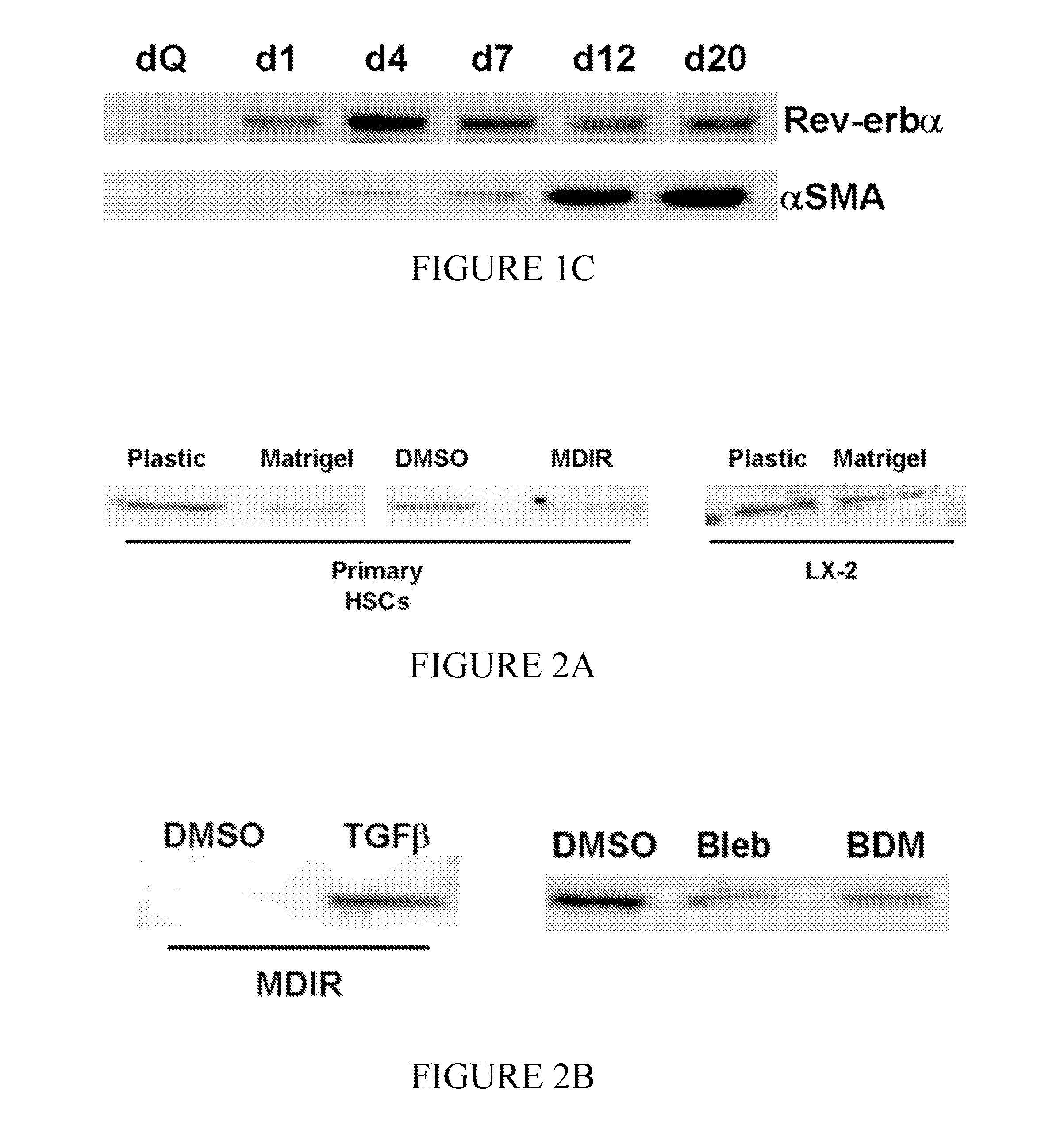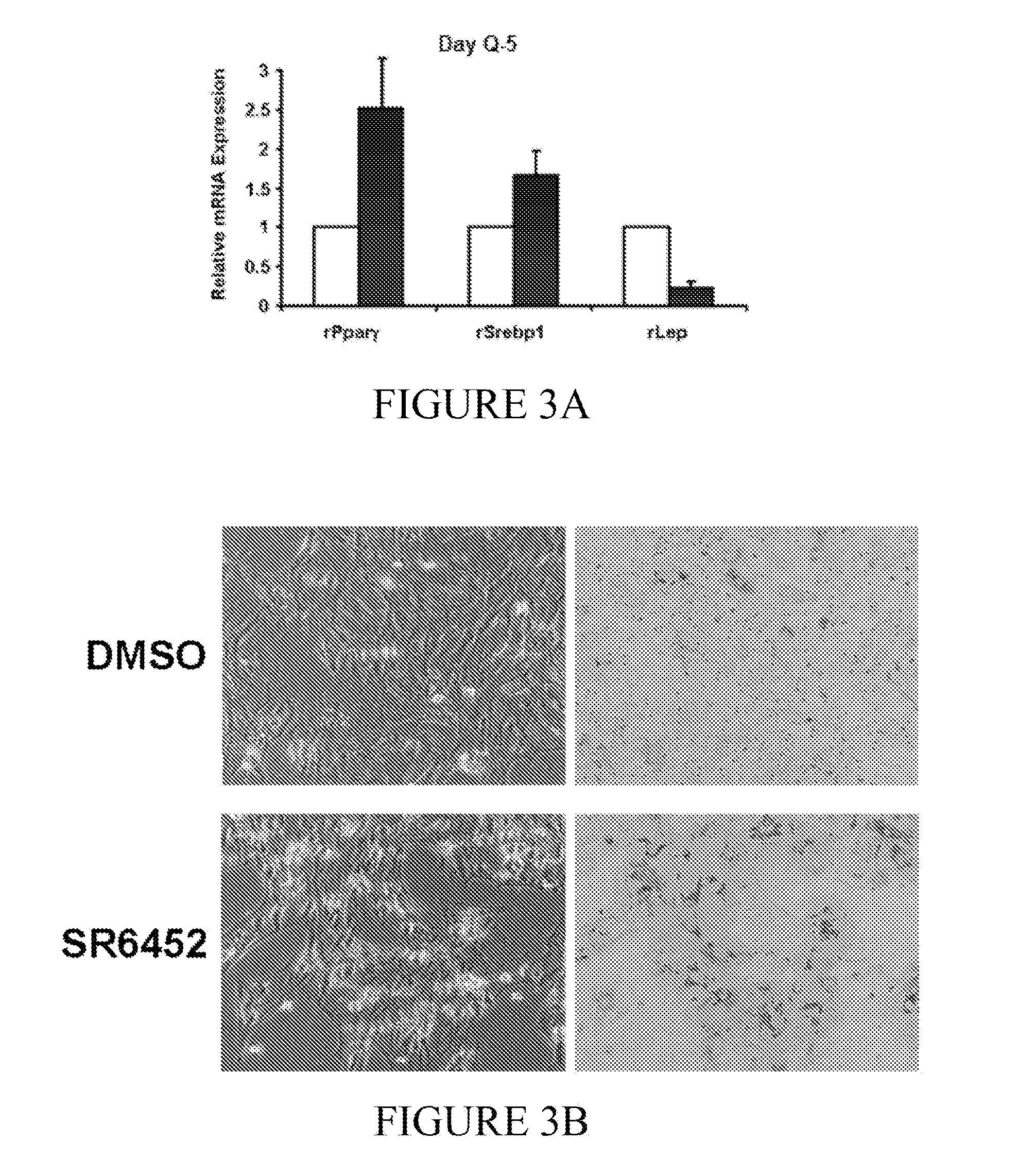Methods of Treating Portal Hypertension
a portal hypertension and hypertension technology, applied in the direction of dna/rna fragmentation, drug compositions, peptides, etc., can solve the problems of affecting the normal liver structure, so as to prevent, treat, ameliorate and/or delay the onset of portal hypertension
- Summary
- Abstract
- Description
- Claims
- Application Information
AI Technical Summary
Benefits of technology
Problems solved by technology
Method used
Image
Examples
example 1
Involvement of Rev-erbα in HSC Transdifferentiation
[0072]A series of experiments were conducted to determine the functional role of Rev-erbα in HSC transdifferentiation. In these experiments, culture-activated primary rat HSCs and human LX-2 cells were used. To determine the effect of Rev-erbα on HSC transdifferentiation and contraction, cells were treated with a specific synthetic modulator, SR6452 (10 μM). mRNA and protein expression were determined by qRT-PCR and Western blot, respectively. Changes in cellular morphology, Rev-erbα expression / localization and αSMA expression were observed by confocal microscopy. Additionally, cell contractility was assessed.
I. Materials and Methods
[0073]Primary Cell Isolation and Culture
[0074]Primary rat HSCs were isolated by pronase / collagenase perfusion digestion followed by density gradient centrifugation with Optiprep. Media was replaced every other day to replenish Rev-erb modulator SR6452, which was present at a 10 μM concentration. Cells we...
example 2
Studies Determining In Vivo Efficacy of Using REMAs as a Treatment for Portal Hypertension
[0091]Studies were performed to determine the in vivo efficacy of using SR6452 as a treatment for portal hypertension. Rats underwent bile duct-ligation (˜5 weeks, until ascites developed) to induce fibrosis and thus portal hypertension. Initial hemodynamic measurements were taken prior to addition of the agonist. SR6452 (10 μM / kg body weight) was administered via the femoral vein and measurements taken again one hour after administration.
I. Methods—Hemodynamic Measurements
[0092]Experiments were performed 5 weeks after male Sprague-Dawley rats underwent bile duct-ligation (BDL), when cirrhosis was fully established and ascites present. SR6452 (10 μM / kg body weight) was administered via the femoral vein and hemodynamic measurements taken one hour after administration. Hemodynamic studies were performed as previously described (J Hepatol 2012 57:1220-1227). Briefly, a laparotomy was performed und...
example 3
Specific Targeting of REMAs to HSCs
[0095]Rev-erbα is expressed in cell types other than HSCs, including hepatocytes. It is therefore desirable to limit the distribution of REMAs to activated HSCs. This can be done by linking the REMA to a suitable targeting moiety.
[0096]Accordingly, in this example, the REMA SR9009 is attached to mannose-6-phosphate human serum albumin (M6PHSA). The M6PHSA moiety binds to the insulin-like growth factor II receptor on activated HSCs, and has been shown to successfully target, e.g., a Rho kinase inhibitor and an ALK5 inhibitor to HSCs. See, e.g., van Beuge et al. (2013), PLOS ONE 8(2): e56442. The linkage between SR9009 and M6PHSA can be achieved using the Universal Linkage System (ULS™), as described. Id.
PUM
| Property | Measurement | Unit |
|---|---|---|
| Fraction | aaaaa | aaaaa |
| Fraction | aaaaa | aaaaa |
| Fraction | aaaaa | aaaaa |
Abstract
Description
Claims
Application Information
 Login to View More
Login to View More - R&D
- Intellectual Property
- Life Sciences
- Materials
- Tech Scout
- Unparalleled Data Quality
- Higher Quality Content
- 60% Fewer Hallucinations
Browse by: Latest US Patents, China's latest patents, Technical Efficacy Thesaurus, Application Domain, Technology Topic, Popular Technical Reports.
© 2025 PatSnap. All rights reserved.Legal|Privacy policy|Modern Slavery Act Transparency Statement|Sitemap|About US| Contact US: help@patsnap.com



